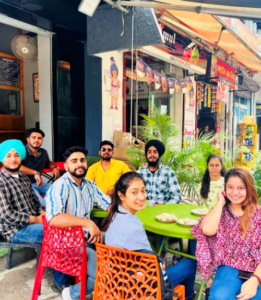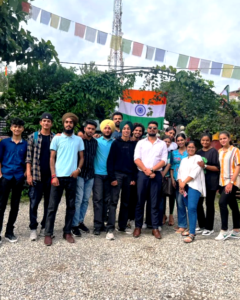Part 1: Questions 1-10
Complete the notes below. Write ONE WORD AND/ OR A NUMBER for each answer.
JUNIOR CYCLE CAMP
The course focuses on skills and safety.
• Charlie would be placed in Level 5.
• First of all, children at this level are taken to practise in a (1)
Instructors
• Instructors wear (2) shirts.
• A (3) is required and training is given.
Classes
• The size of the classes is limited.
• There are quiet times during the morning for a (4) or a game.
• Classes are held even if there is (5)
What to bring
• a change of clothing
• a (6)
• shoes (not sandals)
• Charlie’s (7)
Day 1
• Charlie should arrive at 9.20 am on the first day.
• Before the class, his (8) will be checked.
• He should then go to the (9) to meet his class instructor.
Cost
• The course costs (10) $ per week.
Part 2: Questions 11 and 12
Choose TWO letters, A-E.
According to Megan, what are the TWO main advantages of working in the agriculture and horticulture sectors?
A the active lifestyle
B the above-average salaries
C the flexible working opportunities
D the opportunities for overseas travel
E the chance to be in a natural environment
Questions 13 and 14
Choose TWO letters, A-E.
Which TWO of the following are likely to be disadvantages for people working outdoors?
A the increasing risk of accidents
B being in a very quiet location
C difficult weather conditions at times
D the cost of housing
E the level of physical fitness required
Questions 15-20
What information does Megan give about each of the following job opportunities?
Choose SIX answers from the box and write the correct letter, A-H, next to Questions 15-20.
Information
A not a permanent job
B involves leading a team
C experience not essential
D intensive work but also fun
E chance to earn more through overtime
F chance for rapid promotion
G accommodation available
H local travel involved
Job opportunities
15. Fresh food commercial manager
16. Agronomist
17. Fresh produce buyer
18. Garden centre sales manager
19. Tree technician
20. Farm worker
Part 3: Questions 21 and 22
Choose TWO letters, A-E.
Which TWO points does Adam make about his experiment on artificial sweeteners?
A The results were what he had predicted.
B The experiment was simple to set up.
C A large sample of people was tested.
D The subjects were unaware of what they were drinking.
E The test was repeated several times for each person.
Questions 23 and 24
Choose TWO letters, A-E.
Which TWO problems did Rosie have when measuring the fat content of nuts?
A She used the wrong sort of nuts.
B She used an unsuitable chemical.
C She did not grind the nuts finely enough.
D The information on the nut package was incorrect.
E The weighing scales may have been unsuitable.
Questions 25-30
Choose the correct letter, A, B or C.
25. Adam suggests that restaurants could reduce obesity if their menus
A offered fewer options.
B had more low-calorie foods.
C were organised in a particular way.
26. The students agree that food manufacturers deliberately
A make calorie counts hard to understand.
B fail to provide accurate calorie counts.
C use ineffective methods to reduce calories.
27. What does Rosie say about levels of exercise in England?
A The amount recommended is much too low.
B Most people overestimate how much they do.
C Women now exercise more than they used to.
28. Adam refers to the location and width of stairs in a train station to illustrate
A practical changes that can influence people’s behaviour.
B methods of helping people who have mobility problems.
C ways of preventing accidents by controlling crowd movement.
29. What do the students agree about including reference to exercise in their presentation?
A They should probably leave it out.
B They need to do more research on it.
C They should discuss this with their tutor.
30. What are the students going to do next for their presentation?
A prepare some slides for it
B find out how long they have for it
C decide on its content and organisation
Part 4: Questions 31-40
Complete the notes below. Write ONE WORD ONLY for each answer.
Hand knitting
Interest in knitting
• Knitting has a long history around the world.
• We imagine someone like a (31) knitting.
• A (32) ago, knitting was expected to disappear.
• The number of knitting classes is now increasing.
• People are buying more (33) for knitting nowadays.
Benefits of knitting
• gives support in times of (34) difficulty
• requires only (35) skills and little money to start
• reduces stress in a busy life
Early knitting
• The origins are not known.
• Findings show early knitted items to be (36) in shape.
• The first needles were made of natural materials such as wood and (37)
• Early yarns felt (38) to touch.
• Wool became the most popular yarn for spinning.
• Geographical areas had their own (39) of knitting.
• Everyday tasks like looking after (40) were done while knitting.








